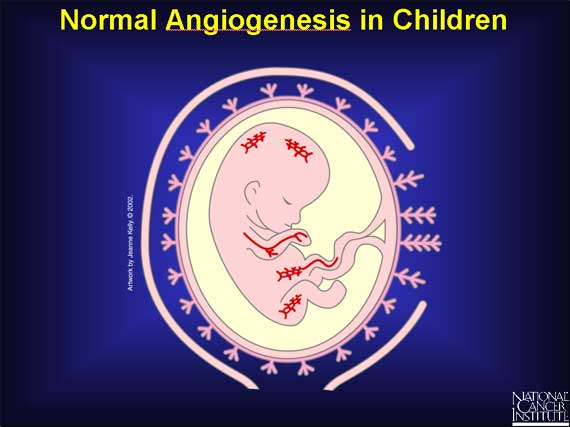|
In addition to its role in tumors, angiogenesis occurs normally in the human
body at specific times in development and growth. For example, a developing
child in a mother's womb must create the vast network of arteries, veins, and
capillaries that are found in the human body. A process called vasculogenesis
creates the primary network of vascular endothelial cells that will become
major blood vessels. Later on, angiogenesis remodels this network into the
small new blood vessels or capillaries that complete the child's circulatory
system.

< Previous | Index | Next Slide > |